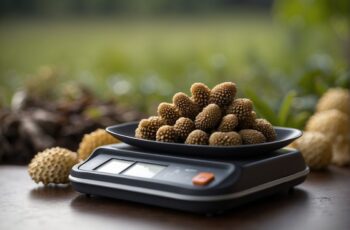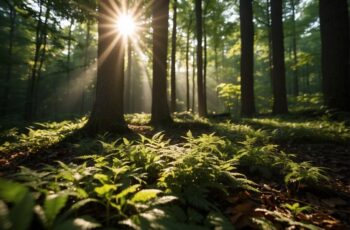Mushrooms, the diverse and often underrated kingdom of fungi, are more than just a culinary delight; they’re a fascinating component of the natural world that you can explore. Whether you’re interested in gourmet varieties for your next meal, or you’re curious about the psychedelic types that spark much debate, knowing how to find mushrooms near you is both thrilling and useful. With the advent of technology and a growing interest in foraging, locating these fungi has become more accessible than ever.
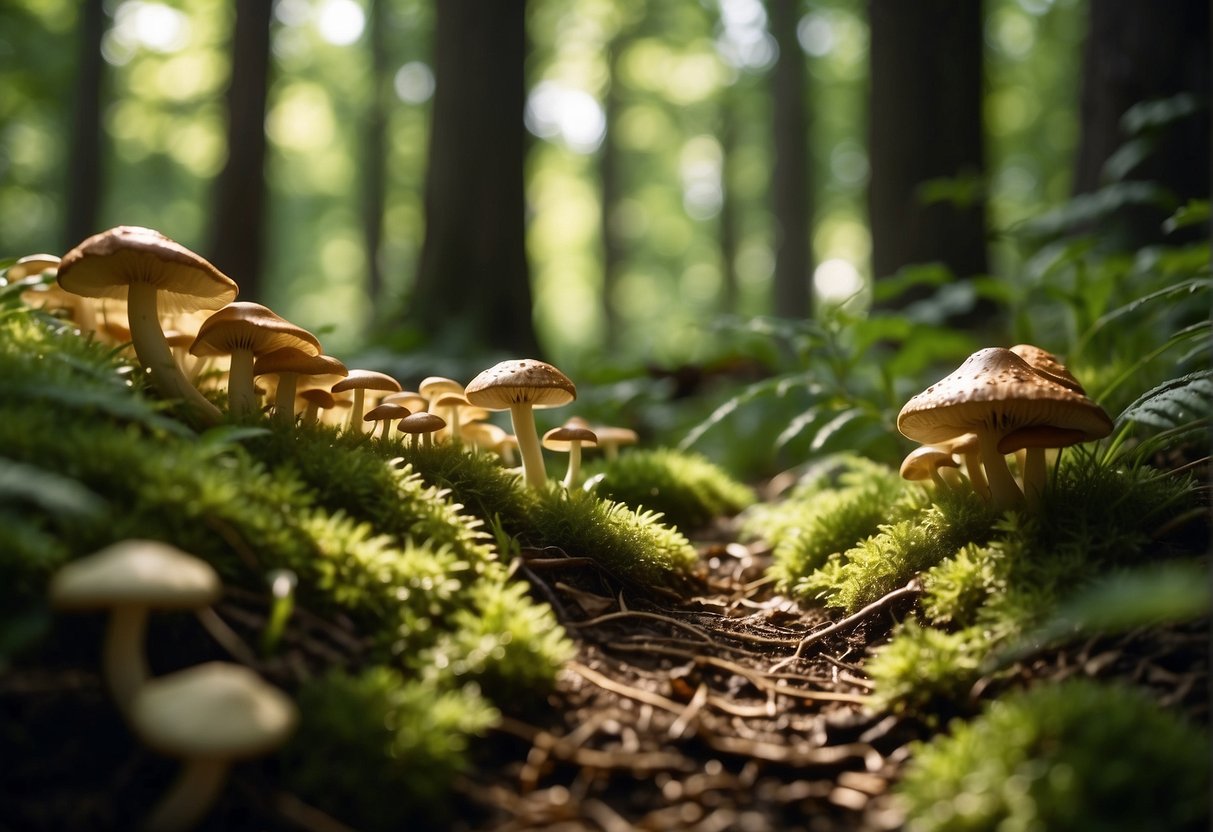
When you begin your quest for mushrooms, it’s important to note the wide variety they encompass. From edible varieties like the common cremini found in grocery stores to the more elusive and wild chanterelles and morels, each type has its unique habitat and season. Moreover, responsible foraging is a must, as some mushrooms can be toxic. Equipped with the right information, you can partake in this age-old tradition safely and sustainably, connecting with nature and potentially even diversifying your diet.
Key Takeaways
- Mushrooms offer a vast array of types and uses that you can discover.
- Responsible foraging for mushrooms is an engaging way to connect with nature.
- Advances in technology have made identifying and locating mushrooms easier.
Understanding Mushrooms
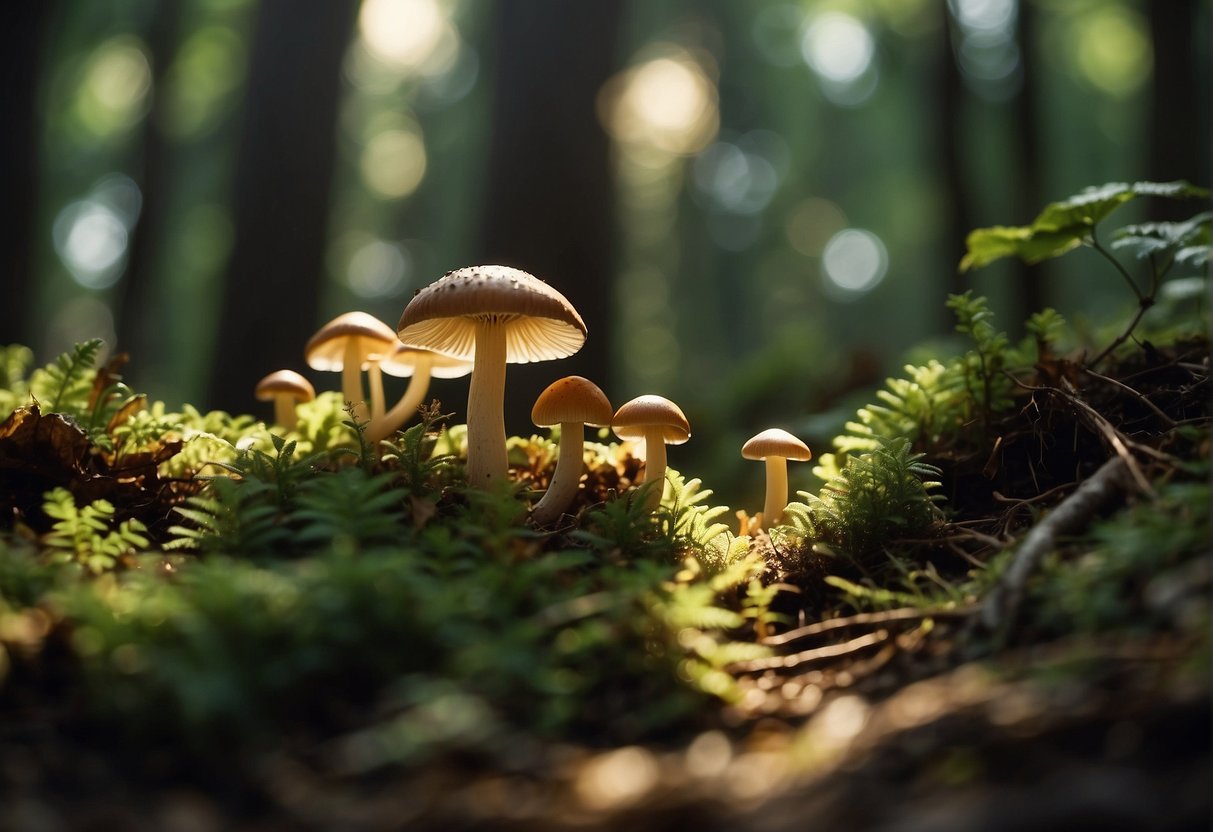
Mushrooms, the fruiting bodies of fungal organisms, are a diverse and fascinating form of life. They play critical roles in their ecosystems, often forming symbiotic relationships with plants by exchanging nutrients and aiding in growth.
To identify mushrooms in the wild, you must pay attention to various features:
- Cap shape and color: The most visible parts to help with identification.
- Stem characteristics: Includes stem presence, length, and thickness.
- Gill structure: The pattern and spacing beneath the cap can be crucial clues.
- Spore print: The powdery deposit obtained by placing the cap gill-side down.
When observing mushrooms, remember that some species are toxic, so it’s essential to handle them with care and to never consume wild mushrooms without absolute identification.
Mushrooms propagate through spores, microscopic units that can travel far and wide to colonize new areas. This dissemination strategy is efficient, ensuring their survival and spread across various habitats.
Nutritional Value: Many edible mushrooms are renowned for their health benefits, being low in calories and high in vitamins, minerals, and antioxidants. Their unique flavor profiles make them a favorite among foragers and chefs alike.
Environmental Importance: Beyond their culinary applications, mushrooms contribute to soil health and are key decomposers, breaking down organic matter to recycle nutrients back into the environment.
Next time you’re in the great outdoors, take a moment to admire the intricate world of mushrooms; appreciate their role in nature and their contributions to human health and cuisine. Remember to forage responsibly and sustainably to maintain the delicate balance that mushrooms help to uphold.
Types of Mushrooms in the Wild
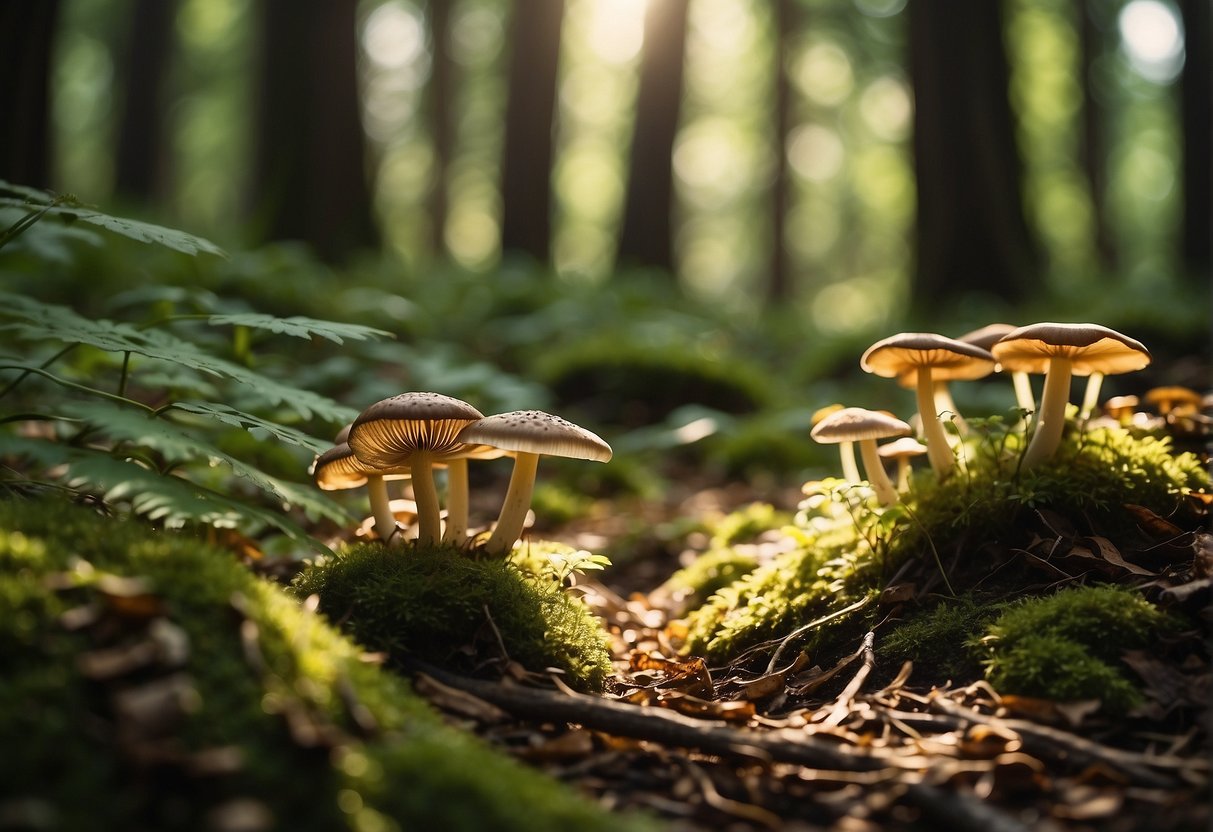
Entering the forest, you are enveloped by a world where mushrooms thrive in every nook. The types of mushrooms you may encounter can vary greatly, from delicious delicacies to dangerous look-alikes. Awareness and knowledge are paramount while foraging.
Edible Mushrooms
- White Chanterelle (Cantharellus subalbidus): These trumpet-shaped fungi are a forager’s delight, celebrated for their delicate flavor. When you’re looking in the right habitats, such as hardwood or coniferous forests, keep an eye out for their distinguishing white to pale colors.
- Chanterelle (Cantharellus spp.): Boasting a vibrant yellow or orange hue, chanterelles are not only a sight to behold but are also sought after for their peppery taste. They often form symbiotic relationships with trees, making forested areas your best bet to find them.
Toxic Mushrooms
- Amanita Muscaria: With its iconic red cap dotted with white, it’s easy to spot but equally toxic. Remember, its beauty demands respect, not consumption.
- Inky Cap (Coprinopsis atramentaria): Distinguishable by its self-dissolving cap, the Inky Cap demands caution; consuming alcohol with this mushroom can lead to adverse effects.
Psychedelic Mushrooms
- Psilocybin Mushroom (Psilocybe spp.): Known for their mind-altering properties, these are often found in moist grasslands. Identify them by their small size, brown or tan color, and the bluish bruising on their stems.
- Hygrocybe conica: Although not psychedelic, these are easily mistaken due to their conical cap. Always verify with an expert, as confusion with psychoactive species could lead to trouble.
Foraging for Mushrooms
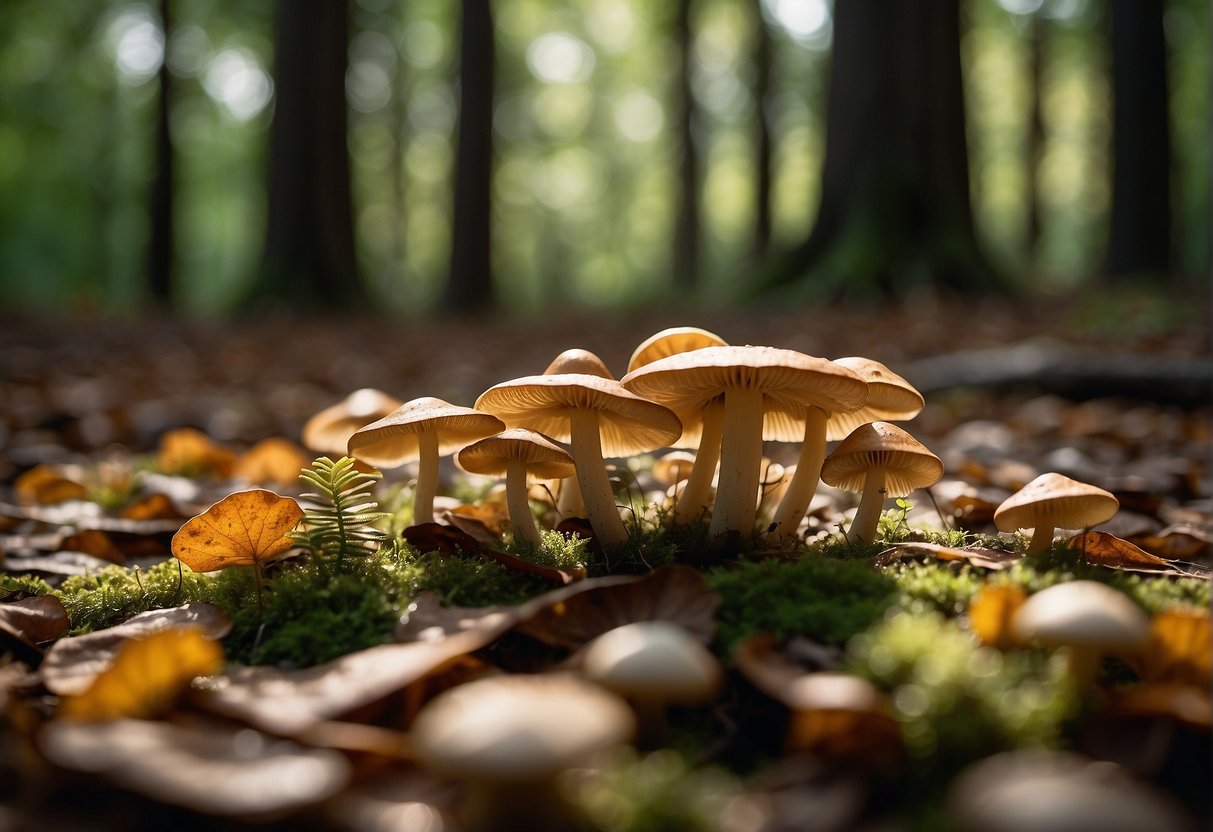
Venturing into the woods for mushroom foraging requires a keen eye and a sense of adventure. First and foremost, safety is paramount. Before heading out, familiarize yourself with local species to avoid harmful varieties. Always handle mushrooms with care and never consume a mushroom unless you are 100% certain of its identity.
Mushrooms thrive in different environments. While some favor the damp undergrowth of a forest, others may grow on moss or around tree roots. Pay attention to these micro-habitats where mushrooms’ hidden networks, or fibrils, establish their colonies. Pack a field guide or use a smartphone app to assist with identification.
Foraging in urban areas can yield surprising finds, but exercise caution. Avoid mushrooms near roads or industrial areas due to possible contamination.
| Do | Don’t |
|---|---|
| Seek local mycological societies | Pick mushrooms near polluted areas |
| Check weather reports for recent rain | Harvest more than you need |
| Study reliable foraging literature | Consume without proper identification |
Always be mindful of local regulations and private property rights. Happy foraging and may your basket be bountiful!
Mushrooms and Technology
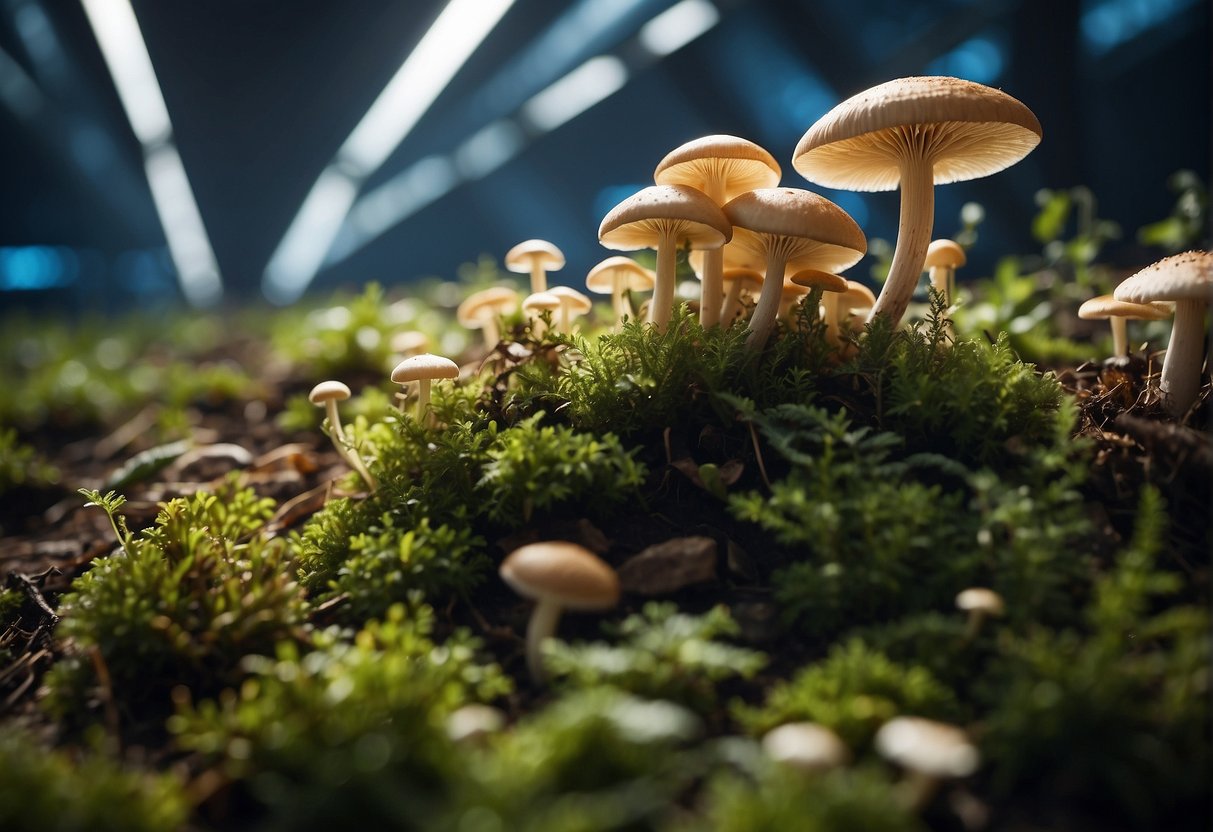
In today’s digital age, technology has simplified the way you interact with the natural world, including how you locate and identify mushrooms. Whether you’re a skilled mycologist or an outdoor enthusiast, useful tech advancements are at your fingertips.
Digital Mushroom Identifiers
Digital mushroom identifiers allow you to quickly discern various species of fungi, enhancing your foraging experience. Websites like Four Star Mushrooms provide sustainable agriculture systems and could also offer insights into mushroom varieties. When using digital identifiers, you simply upload a photo to the page, and sophisticated algorithms process it at impressive speeds. Additionally, third-party browser plugins like Ghostery or NoScript can be employed to manage and block JavaScript trackers that slow down your web browser, ensuring your mushroom research is not only informative but also secure.
Mushroom Foraging Apps
Mushroom foraging apps are powerful tools in the palm of your hand. They harness GPS technology to guide you to mushroom hotspots and often include additional features like logs for tracking your finds. Some apps even have a social aspect, allowing you to share your foraging victories with a community of like-minded individuals. For those interested in more than edible mushrooms, it’s important to mention that apps might also cover various types, including psilocybin or magic mushrooms, with safety information for legal and responsible use.
Culinary Uses of Mushrooms
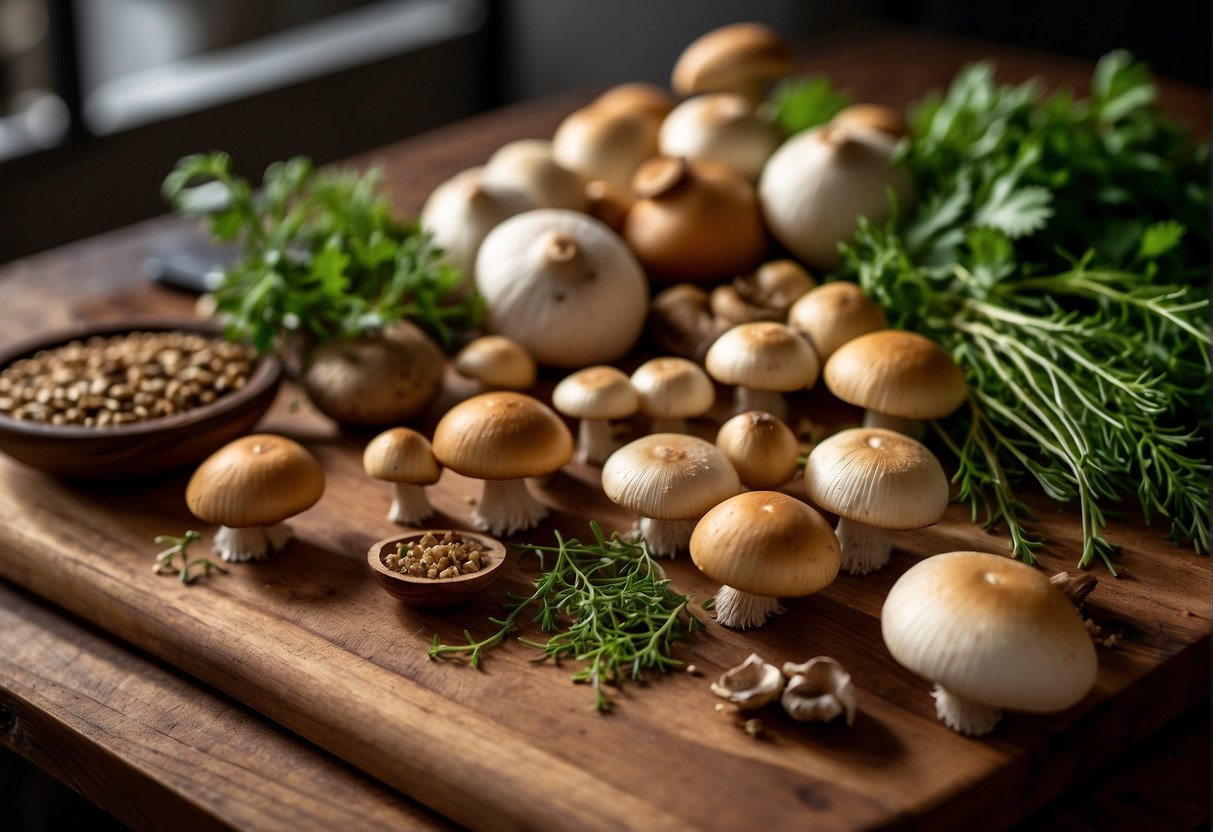
Mushrooms are a versatile ingredient, enjoyed by many for their rich flavors and substantial textures. With varieties like the chanterelle and icantharellus, known for their distinct taste and ability to elevate dishes, your culinary adventures can reach new heights.
When foraging or purchasing mushrooms, it’s important to handle them correctly. Chanterelles, for example, are best when fresh and properly cleaned, imparting a peppery and fruity flavor that pairs exceptionally well with eggs and wild game.
Icantharellus, also part of the chanterelle family, brings a subtle earthiness to your dishes, ideal for hearty stews or as an accompaniment to meats. Their robust structure means they hold up well in cooking, making them suitable for sautéing or simmering.
If you’re keen on crafting a meal fit for royalty, introduce royal mushrooms to your palate. These exquisite fungi can make any dinner seem like a feast fit for a king.
Here’s a simple guide on how to incorporate these mushrooms into your meals:
- Chanterelles: Sauté with garlic and white wine, perfect for topping steaks.
- Icantharellus: Incorporate into risottos or pasta for a rustic flavor.
- Royal Mushrooms: Grill and serve with a brush of olive oil and a sprinkle of salt.
By inviting mushrooms like these into your kitchen, you’re not only adding flavor but also health benefits to your diet. They’re low in calories, yet high in vitamins, minerals, and antioxidants. So next time you’re out in the woods or at your local market, keep an eye out for these culinary gems.
Ecological Significance
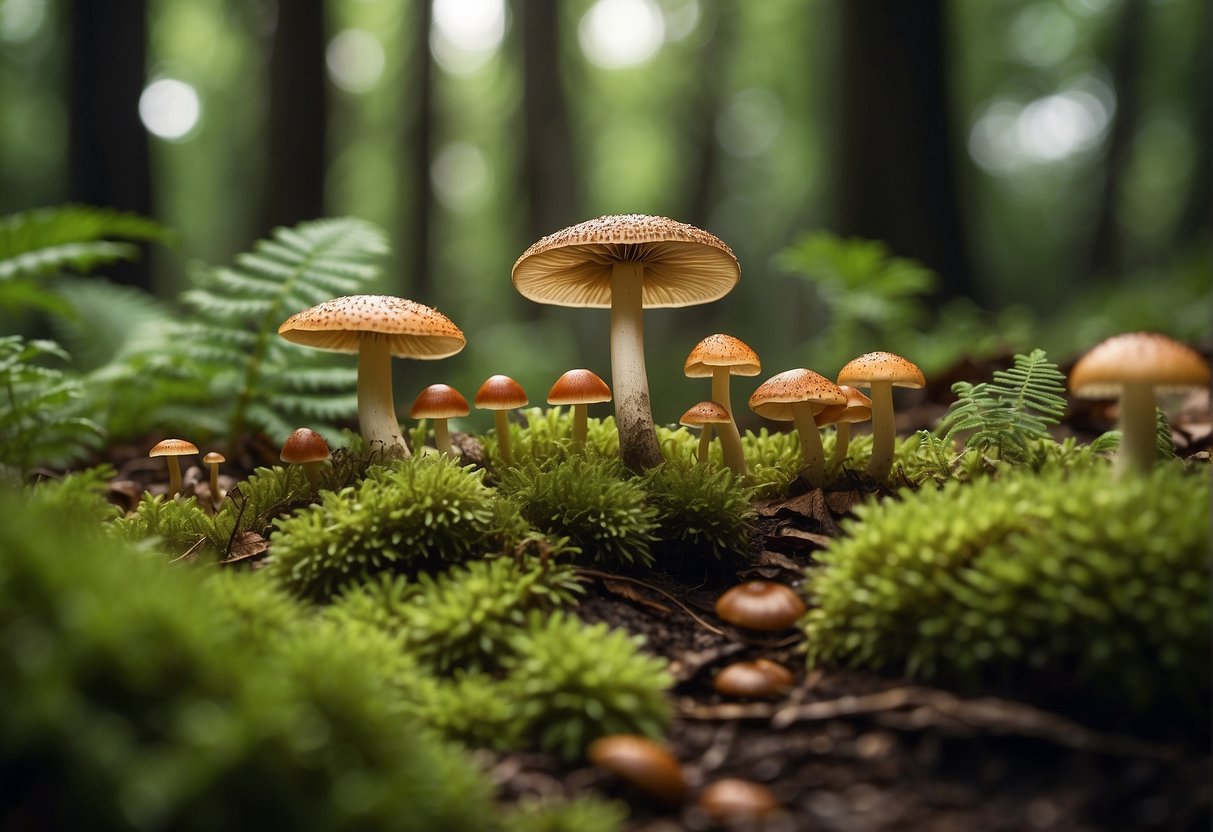
When you’re out in the woods, you might notice mushrooms nestled among the trees or peeking out beside a winding road. These fungi are not just random inhabitants of the forest floor; they play a critical role in maintaining the health of ecosystems.
Mushrooms serve as nature’s recyclers. They break down dead organic matter, like fallen leaves and ash from burnt wood. This decomposition process is essential, turning these materials into fertile soil that nourishes the forest. They’re particularly important for trees, aiding in soil formation and nutrient cycling critical for tree growth.
In a symbiotic relationship known as mycorrhizae, mushrooms form connections with tree roots. This partnership allows for effective nutrient exchange: the fungi enhance the trees’ access to water and minerals, while the trees provide the carbohydrates the fungi need to thrive. As a result, when you see mushrooms flourishing at the base of a tree, it’s often a sign of a healthy, interconnected ecosystem at work.
In a broader sense, mushrooms help stabilize ecosystems by supporting diverse plant growth. This diversity, in turn, provides habitats for various animals, influences water cycles, and even affects the climate. Your friendly neighborhood mushroom is doing a lot more than just producing a tasty treat or offering a pleasing aesthetic; it’s quietly sustaining the life around it.

